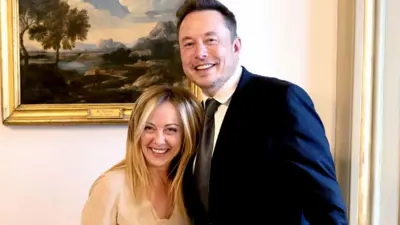We've updated our Privacy and Cookies Policy
We've made some important changes to our Privacy and Cookies Policy and we want you to know what this means for you and your data.
Twenty years on from Dolly the sheep
- Author, Pallab Ghosh
- Role, Science correspondent, ҙуПуҙ«ГҪ News
The birth of Dolly the sheep seemed one of those moments in scientific research that would change the world forever.
The cloning of the first animal from an adult cell was a remarkable scientific achievement. It promised new treatments for debilitating diseases. But it also raised fears of cloned human beings, designer babies and a dystopian future.
Twenty years on, neither the hopes nor the fears have been realised. So what is Dolly's legacy?
I first saw Dolly in 1997 at the Roslin Institute just outside Edinburgh. She stood apart from the other sheep in the pens at this agricultural research centre. She stood prouder, her fleece seemed like a lion's mane and there was an aura about her.
Dolly's creation had echoes of Mary Shelley's classic novel Frankenstein, in which inanimate tissue was brought to life by electricity.
Dolly was created from DNA taken from a cell taken from an sheep. The technique involved putting the DNA into an empty eggshell and then zapping it with electricity. This created an embryo.
Researchers at Roslin then implanted the embryo into the womb of a sheep which grew into Dolly - an exact genetic copy of the sheep from which the skin cell was taken.
It took 277 attempts to clone Dolly and there were many miscarriages on the way.
Image source, Getty Images
There were also genuine concerns that it would not be long before cloned humans would be walking the Earth - people would try to clone themselves to achieve a kind of immortality or they might try to resurrect a beloved dead relative.
The airwaves were filled with conversations about what it meant to be human, whether the clones would be exactly the same as the person from which they were cloned and what kind of world the scientists were tumbling us into.
When I met the researchers at Roslin they were acutely aware of public suspicion. And they knew it was important to be clear, open and honest about their work. Dolly's creator, Prof Sir Ian Wilmut, could not be any more different from fictional scientists such as Dr Frankenstein or indeed Dr Moreau, who developed human-like hybrids in a story by HG Wells.
By contrast, Prof Wilmut is a quietly-spoken man whose motivation was to improve animal welfare and human health. This bespectacled scientist with his gentle candour was ideally complemented by the enthusiastic and eloquent Dr Simon Best, who was brought in to commercialise the technology to improve human health.
A former manager of the early 1980s pop group The Human League turned biotechnology pioneer, Prof Best knew how to sell a good story and do so with panache.
Image source, Science Photo Library
Between them they quickly changed the narrative from that of a nightmare future to one in which cloning was used to treat many incurable diseases. Prof Wilmut and Dr Best promoted the term "therapeutic cloning".
Their vision was to develop treatments for heart disease, Parkinson's Disease and rheumatism by taking cells from patients and using cloning technology to create healthy tissues which could then be transplanted to heal their damaged cells.
This raised further concerns from some church and anti-abortion groups, who were concerned that the process involved the creation, and then destruction, of human embryos. They wanted the technology banned but, following strong lobbying by the medical research community, parliament permitted therapeutic cloning but banned the cloning of human beings.
Since then, the much hoped-for benefits from therapeutic cloning have not emerged. Some groups in the UK are cloning tissues from patients to study diseases and test drugs. But no so-called cell-replacement treatments have yet been developed.
However, important scientific breakthroughs can - and usually do - take time to have an impact.
Dolly's legacy is to show scientists that animal cells can be reprogrammed. They can be rejuvenated and redirected to form any cell in the human body. Scientists may not have reaped the clinical benefits just yet but, at a stroke, Dolly's birth changed scientific thinking forever.
It is hard to imagine how this incredible biological insight won't alter the world fundamentally and in ways we have yet to imagine.
Top Stories
More to explore
Most read
Content is not available








